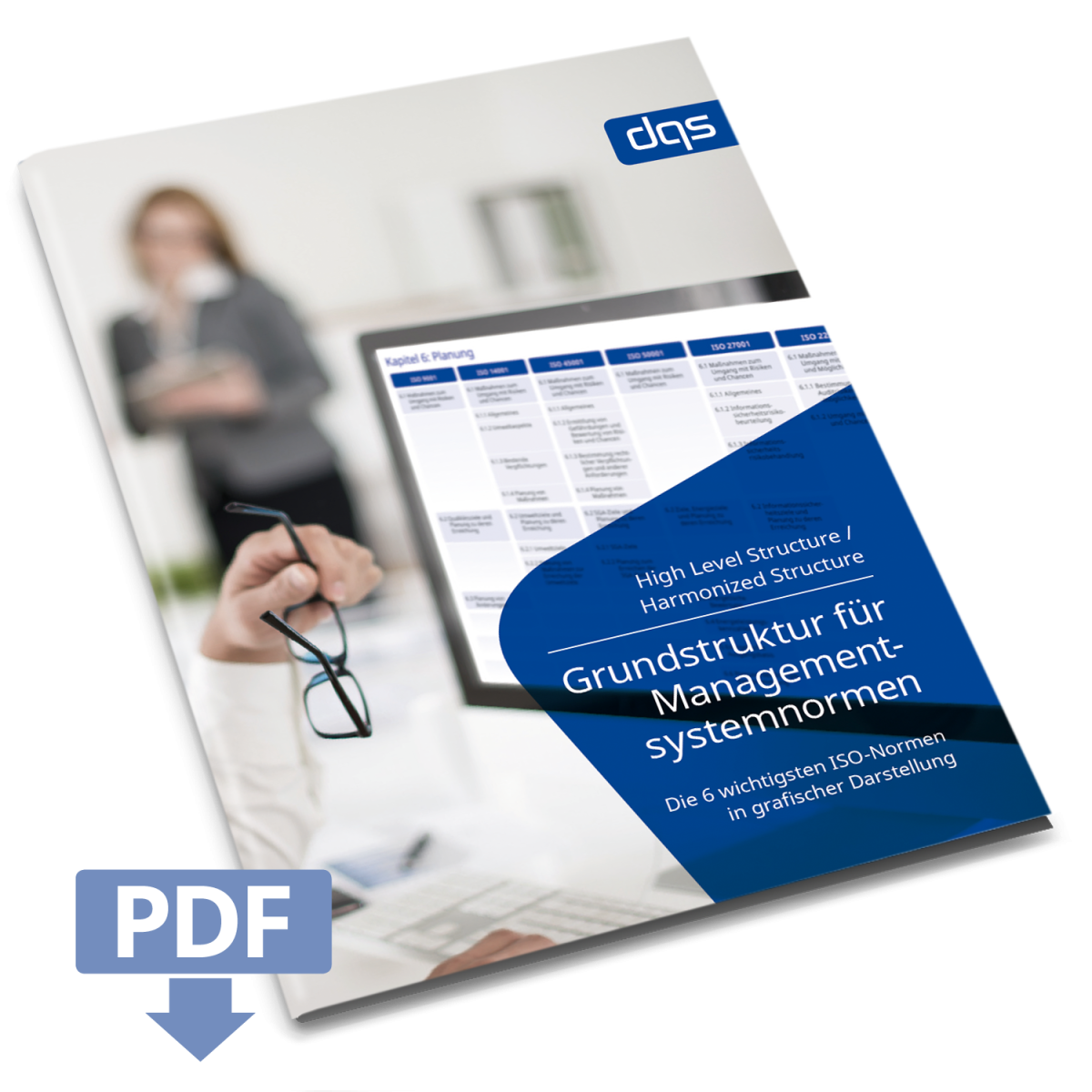Definition of High Level Structure
The Harmonized Structure (HS), or High Level Structure (HLS), is a guideline for the development of new ISO management system standards that harmonizes their structure and requirements to a large extent. ISO's goal with the HS (HLS) is to ensure uniform use of core texts, terms, and definitions. Above all, the common basic requirements promote the integration of different systems in an organization.
This keeps the management system lean and efficient, while still effectively meeting all the expectations of interested parties. Other keywords include: Context of the organization, leadership and commitment, process orientation, and the risk-based approach.
The structure of the HLS
The High Level Structure has a strong focus on top management and the context of the organization (Clause 4 and Clause 5). The basic structure always consists of ten Chapters (called Clauses):
1 Scope
2 Normative references: both sections contain standard-specific wording and define the objectives
3 Terms and definitions: Reference to the general terms presented in Appendix SL and any terms specific to the standard.
4 Context of the organization: understanding of internal and external matters, the needs and expectations of relevant interested parties
5 Leadership: top management responsibility and commitment, policies, organizational functions, roles, responsibilities, and authorities
6 Planning: measures to manage risks and opportunities, quality objectives, and plans to achieve them
7 Support: necessary resources, competence, awareness, communication, and documented information
8 Operations: operational planning and governance
9 Performance evaluation: monitoring, measurement, analysis and evaluation, internal audit, management review
10 Improvement: nonconformity, corrective action, and continuous improvement.
The subclauses of individual standards vary by topic around the subject-specific content of a standard. For example, the ISO 9001 quality management standard has more subclauses under Clause 5 than the ISO 14001 standard for environmental management.
Clauses 4 to 10 are of particular relevance for the certification of management systems, not least because the PDCA cycle and thus the continuous improvement process can also be found here.
Essential changes in the HS - a selection
The new Harmonized Structure will become effective with the next revision of the respective standard. Of the better-known ISO Management System Standards, ISO 37301:2021 (Compliance Management) and the recently revised Information Security Standard ISO 27001 have benefited from this so far.
Clause 1 "Scope": The scope of each standard will in future be linked to the intended results of the management system. For ISO 14001, this would be, for example, the improvement of environmental performance, the fulfillment of binding obligations and the achievement of set environmental goals - for users rather a formality, for auditors possibly an indicator for assessing the effectiveness of a management system.
Clause 3 "Terms": In future, all terms relevant to a management standard and their standard definitions must be listed in full in Clause 3 of the respective standard. This should lead to greater transparency and clarity. A mere reference to "sister standards" is thus no longer necessary.
The terms "outsourcing" and "control of outsourced processes" have been completely deleted, since in the past users were often unable to clearly identify when a process is to be considered outsourced and when it is not. New requirements have been included in Clause 8 to take better account of this situation.
Clause 4.2 "Interested parties": In this clause, a clarification has been made that is indirectly linked to the standard definition of the term "requirement". In 4.2.b, it is required to identify the relevant requirements of the relevant interested parties. This has been supplemented by a requirement 4.2.c, according to which, from the identified relevant requirements, those relevant to the organization's management system are once again filtered out.
In standards such as ISO 14001 or ISO 45001, a similar formulation already exists, according to which an organization must filter out from the requirements of the relevant interested parties those requirements that it is legally obligated to fulfill.
Clause 6 "Planning": In view of the topic "Management of change", this clause has been given an additional sub clause 6.3. Clause 6.3 requires that changes to the management system be planned. In Clause 8 "Operation", this requirement is made more specific in that the planning of changes must also be controlled.
Clause 7.5 "Documented information": This clause now focuses on the availability, usability and protection of the documented information required for the management system and required by the relevant standard (7.5.3). And this applies regardless of what type of documented information is involved. Old vocabulary such as "retention" is no longer used.
Clause 10 "Improvement": After the revision, the clause now aims more at (proactively) initiating improvements than at identifying possible improvements. This change may be understood as an adaptation to the requirement for general "continuous improvement".
Important to know: HLS and PDCA
The clauses of the High Level Structure are based on the PDCA cycle of Plan-Do-Check-Act. The following clauses are assigned to the individual PDCA phases:
- Plan: Clauses 4, 5 and 6
- Do: Clause 7 and 8
- Check: Clause 9
- Act: Clause 10
Which standards follow the High Level Structure?
All modern ISO management system standards are based on the common basic structure - High Level Structure. This includes the ISO standards for
Quality management: ISO 9001
Environmental protection: ISO 14001
Security and health at work: ISO 45001
Energy management: ISO 50001
Information security: ISO 27001
Compliance management: ISO 37301
Business continuity management: ISO 22301




